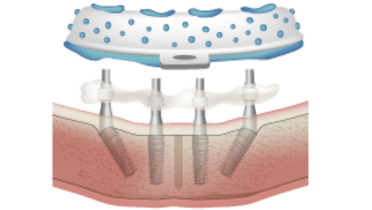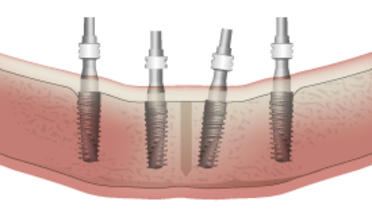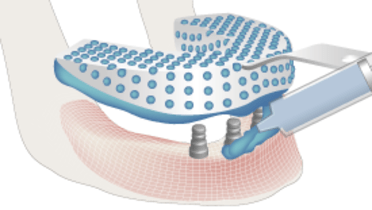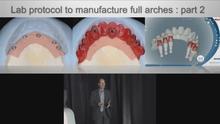-
0
Patient Assessment
- 0.1 Patient demand
- 0.2 Overarching considerations
- 0.3 Local history
- 0.4 Anatomical location
- 0.5 General patient history
-
0.6
Risk assessment & special high risk categories
- 5.1 Risk assessment & special high risk categories
- 5.2 age
- 5.3 Compliance
- 5.4 Smoking
- 5.5 Drug abuse
- 5.6 Recreational drugs and alcohol abuse
- 5.7 Parafunctions
- 5.8 Diabetes
- 5.9 Osteoporosis
- 5.10 Coagulation disorders and anticoagulant therapy
- 5.11 Steroids
- 5.12 Bisphosphonates
- 5.13 BRONJ / ARONJ
- 5.14 Radiotherapy
- 5.15 Risk factors
-
1
Diagnostics
-
1.1
Clinical Assessment
- 0.1 Lip line
- 0.2 Mouth opening
- 0.3 Vertical dimension
- 0.4 Maxillo-mandibular relationship
- 0.5 TMD
- 0.6 Existing prosthesis
- 0.7 Muco-gingival junction
- 0.8 Hyposalivation and Xerostomia
- 1.2 Clinical findings
-
1.3
Clinical diagnostic assessments
- 2.1 Microbiology
- 2.2 Salivary output
-
1.4
Diagnostic imaging
- 3.1 Imaging overview
- 3.2 Intraoral radiographs
- 3.3 Panoramic
- 3.4 CBCT
- 3.5 CT
- 1.5 Diagnostic prosthodontic guides
-
1.1
Clinical Assessment
-
2
Treatment Options
- 2.1 Mucosally-supported
-
2.2
Implant-retained/supported, general
- 1.1 Prosthodontic options overview
- 1.2 Number of implants maxilla and mandible
- 1.3 Time to function
- 1.4 Submerged or non-submerged
- 1.5 Soft tissue management
- 1.6 Hard tissue management, mandible
- 1.7 Hard tissue management, maxilla
- 1.8 Need for grafting
- 1.9 Healed vs fresh extraction socket
- 1.10 Digital treatment planning protocols
- 2.3 Implant prosthetics - removable
-
2.4
Implant prosthetics - fixed
- 2.5 Comprehensive treatment concepts
-
3
Treatment Procedures
-
3.1
Surgical
-
3.2
Removable prosthetics
-
3.3
Fixed prosthetics
-
3.1
Surgical
- 4 Aftercare
Impressions - overview
Key points
- Impressions have the goals of capturing alveolar ridge and mucosal contours as well as position and angulation of implants
- Accurate impressions facilitate fabrication of prosthesis that are well-adapted to tissues to address esthetic, phonetic and oral hygiene needs
- For fixed definitive prostheses, an accurate impression is imperative for fabrication of a passive well-fitting metal framework
- Commonly used impression materials are polyvinylsiloxane and polyether, intra-oral digital impression technologies are evolving options
- Key considerations when making impressions are whether to use open or closed trays, splinted or non-splinted impression copings and whether implants are aligned parallel or non-parallel
Objectives
The goals of an impression are to accurately capture tissue contours necessary and relevant for fabrication of a prosthesis that adapts well to mucosa or a prosthesis that fits well and passively on implants.
The benefit of a definitive cast that accurately represents mucosal contours is a prosthesis that adapts to these contours in a way that is:
-
esthetically pleasing in that there is no visible space or shadow between prosthesis and mucosa in esthetic areas
-
functionally optimal and allows proper enunciation
-
easily cleansable by the patient to ensure adequate oral hygiene for tissue health
The benefit of a definitive cast that accurately represents the position (height, angulation, orientation, adjacent soft tissue contours) of implants is the fabrication of frameworks that are well-fitting and passively seated. Although less problematic than in past years due to the improvements in materials and screw joint geometry, prosthesis mis-fit must be avoided. The combination of an accurate definitive cast and new sophisticated CAD-CAM technology has greatly improved accuracy of fit.
Key considerations in impression making for fixed implant prostheses
Traditional and modern implant therapies require consideration of the impression making phase not just from the viewpoint of generating an accurate master/definitive cast, but also from viewpoint of practical chairside feasibility. In particular, three aspects of chairside clinical therapy must be considered by the clinician during impression making:
- Parallel vs non-parallel implants: When implants are parallel or close to parallel, an open or closed tray technique can be used. However, when implants are angulated or non-parallel the use of an open tray is preferred to permit retrieval of the impression.
- Open tray vs closed tray: An open tray technique (for angulated or non-parallel implants) requires use of impression copings that are attached to implants via a separate retaining screw and which must be accessible through the tray opening for loosening for impression retrieval. In this scenario, the impression copings remain embedded in the impression. Implant analogs are fastened to the copings and then the definitive cast is poured. A closed tray technique (for parallel implants) can be used with tapered impression copings which are fastened directly to implants. In this scenario, the copings stay attached to the implants during impression retrieval and are placed back into the impression with implant analogs prior to pouring of the definitive cast.
- Splinted vs unsplinted impression copings: Splinting of impression copings may increase the accuracy of the impression as long as a splinting material that sets up rigidly and which has had polymerization related dimensional changes minimized.
These three important variables are discussed in greater detail later in this application.
impression copings embedded. Courtesy of Dr. Charles Goodacre, Loma Linda
Elastomeric impression materials and digital impressions
Although a variety of impression materials exist, polyvinylsiloxane and polyether are two commonly used elastomeric impression materials in the fabrication of fixed implant prostheses. The materials have properties such as stiffness, dimensional accuracy and stability that make them the materials of choice.
Intra-oral scanners are becoming available that provide clinicians and laboratory technicians with a virtual master cast that is converted into an analog one via milling, printing or stereo-lithographic technique. This permits fabrication of precise prosthesis framewoks by means of an integrated digital work flow process, enabling to eliminate some time-consuming clinical and laboratory steps and potentional sources of error and imprecision. Evolving use of such scanners may eventually replace and eliminate traditional impression making techniques.
Cameo Surface Impression Videos - Maxilla




